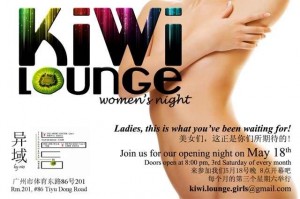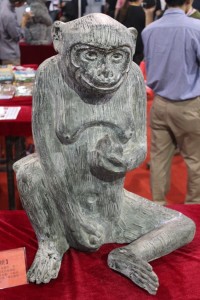Foreigners in Guangzhou launch event to help lesbians meet
Posted: 05/15/2013 11:00 amWhere in Guangzhou can girls who like girls meet other girls?
Last month a lesbian couple made headlines for walking down a street in Guangzhou wearing wedding dresses. In January, Shenzhen hosted the first public wedding between two women in mainland China.
Despite some progress, for lesbians, the situation on the ground remains difficult. This was hinted at when a lesbian couple was turned away from a registry office in the city in February.
Some expats might have come up with a solution.
Last month, 32-year-old English teacher Lisa and her friend Jamie were struck by the lack of venues at which lesbians can hang out. This particular discussion led to the conception of an event for lesbians which will be held at the Kiwi Lounge this coming Saturday, May 18. It will provide an opportunity for women to meet other women in a safe and fun environment.
In Guangzhou, homosexual-friendly bars are mostly geared to men. 24 year-old Huizhou native Rachel thinks the misogyny of wider society has had a rippling effect on the LGBT community.
Rachel is a lesbian and has only come out to her closest friends and brother. Her parents are still unaware.
Rachel realized as early as elementary school that she liked girls. Being in a small town, no information about homosexuality was available to her. Rachel encountered a lot of name-calling and bullying while growing up. Even her own father made fun of her. But this didn’t stop her from having her first relationship with a girl in high school.
In China, some closeted gays and lesbians pursue heterosexual relationships, and even get married. Shenzhen Daily did a feature on the subject in 2011. Some of these married homosexuals have affairs with members of their own sex. Rachel thinks this is even worse.
Lisa is a proud lesbian. But living in China, “people aren’t as understanding about the queer lifestyle.”
Lisa grew up in Toronto, Canada, a city that is known for supporting its LGBT community. But even in Toronto, bars frequented by lesbians tend not to last because, according to Lisa, lesbians do not go out as much as gay men.
Rachel’s journey into accepting herself has been a long one. Her involvement with a lesbian group called “广州女友组” or “Girlfriends Group” has helped her gain the strength that she needs. Rachel’s girlfriend is the President of the group and they’ve been living together for more than a year. She hopes that one day their mutual love will be recognized by society.
Rachel’s parents are kind, but remain conservative. Her parents believe that “a girl should marry a boy”; something they point out to Rachel whenever they have a chance. Their attitude has created tension in their family, and as a result, Rachel has yet to come out to her parents. For now, Rachel says she prefers to be scolded by her parents because she respects them.
The Kiwi Lounge event commences this Saturday (May 18) and the organizers hope to make it a monthly event. Entrance is free. Lisa says the event doesn’t need to be flashy. “We just need a venue to which people can go and mingle with kindred spirits,” she says.


 0
0
 1K
1K
